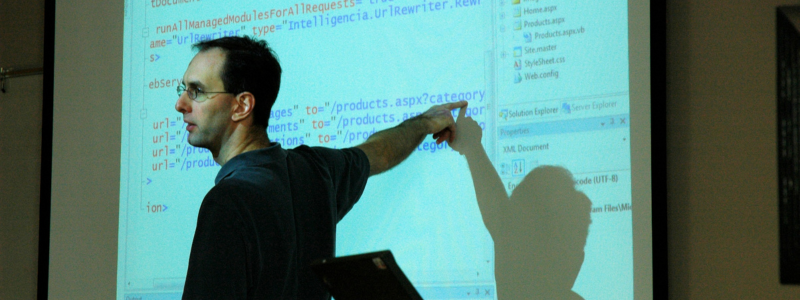Improving Attitudes To Taking Risks When Innovating In GEOINT

Keeping Pace with the Evolution of GEOINT
Just as the Earth we are studying is evolving and dynamic, so too are the data and methods we need to use to solve GEOINT’s difficult problems. New data, methods, and technologies are being developed faster than they can be incorporated into curriculum and training programs. This is evidenced by the continuous development of GEOINT data and methods, including internet of things (IOT) data and fast data streams on the data side (Al Jawarneh et al. 2020; Armstrong et al., 2019); and spatio-statistical, GeoAI, and Generative AI methods on the methods side (Gao et al., 2023; Fotheringham et al., 2017).
Traditional geospatial education and training focus heavily on pre-prepared use cases that have data readily available, clean data and clear solutions. These assignments do not prepare students for the realities of working in GEOINT: data is messy, rarely complete, and the solution isn’t always clear-cut (Lawrence, 2016). Traditional approaches encourage safe thinking and a predilection towards familiar methods and “inside of the box” thinking.
While many educators and trainers recognize this, little progress has been made to rectify it. The data and methods change so quickly. How can we keep up?
Relevant Questions to Ask Next
That’s likely the wrong question to ask. The better questions are: How can we change our ways of educating to prepare professionals who are excited about these challenges? How can we cultivate inquisitive professionals, who are excited to try new data, techniques, and challenges? How can we instill in professionals that it’s ok to try and to fail? To recognize that failure is not an endpoint, but instead a tumble on solving our most difficult problems.

That all starts in the classroom. Yes, it is important to teach students spatial methods, from the basic building blocks to imagery science to complex spatio-statisical methods. But it is nearly impossible to teach every single method imaginable, because of the discipline’s dynamic nature. While we must continue instructing a sample of these methods, we also must take a different approach in other areas of education. We should consider:
- Investing in Problem Solving and Critical Spatial Thinking. When we create carefully curated assignments and exercises, we are not encouraging students to solve problems. GEOINT research questions are often complex with multiple components. To be able to investigate these questions, professionals need to be able to break down these questions into their various components. They need to identify the information needed to answer the questions and identify the appropriate methods. They should be able to investigate data for inconsistencies, inaccuracies, gaps, and biases. Often, these questions don’t come in neat packages; we need to ensure our curriculum allows for opportunities to consider approaches to tackling complex GEOINT questions. If curriculum employed more Problem Based Learning (Pawson et al., 2006), we may create opportunities for problem solving early on, professionals will be more apt to creatively think about how to address questions than leaning only on the methods they have been introduced to.
- Manufacturing Chaos. We should re-engineer exercises to include data that is not perfect, or where the route to a solution is not clear. This resonates with many education researcher’s discussions of the importance of “desirable difficulty” (Hoffman et al., 2010) or “productive struggle” (Wang & Srivastava, 2025) for effective learning. By leveraging this “manufactured chaos,” we can prepare students for the eventual need to navigate ambiguous data and methods by giving them the ability to practice research, critical thinking, and problem-solving skills. This provides them with the space to struggle (and ultimately learn) in a safe environment (and one that more closely simulates reality). One of the greatest aspects of geospatial analysis is that there are multiple ways of solving problems. This approach allows students the opportunity to experience that and be able to defend the decisions they made in their analysis in a professional environment giving them the confidence to take more risks in their analysis.
- Reinstating Research. The research phase in any analysis is one of the most important phases for helping to determine the best methods that will help answer a question, but often this is skipped in favor of easier, more familiar methods. It is also often not emphasized in education or training. Educating and training professionals in how to conduct geospatial research to find the most appropriate data and methods can help break them out of the “inside of the box” mindset. Research can often be daunting, but there are many resources available to geospatial professionals to make this phase faster, less daunting, and more accessible. As educators and trainers, we need to ensure these resources are a part of our curriculum and that students know how to use them. Reinstating research will remind professionals in the workforce that they are not alone but can build on the work of other professionals to help solve their bespoke problems. It will also make new data, methods, and technologies more accessible and easier to find.

Embracing Chaos
These are merely a few suggestions from an education perspective on how we can prepare professionals who are willing to take risks by trying new data, methods, and technologies. By implementing some of these suggestions, hopefully we can encourage the development of curriculum that helps inspire professionals who can embrace chaos and navigate it with confidence and excitement.
References
Al Jawarneh, I. M., Bellavista, P., Corradi, A., Foschini, L., & Montanari, R. (2020). Big spatial data management for the Internet of Things: A survey. Journal of Network and Systems Management, 28, 990-1035.
Armstrong, M. P., Wang, S., & Zhang, Z. (2019). The Internet of Things and fast data streams: prospects for geospatial data science in emerging information ecosystems. Cartography and Geographic Information Science, 46(1), 39-56.
Fotheringham, A. S., Yang, W., & Kang, W. (2017). Multiscale geographically weighted regression (MGWR). Annals of the American Association of Geographers, 107(6), 1247-126
Gao, S., Yingjie, H., Li, W. (2023). Handbook of Geospatial Artificial Intelligence. CRC press.
Hoffman, R., Feltovich, P., Fiore, S., Klein, G., Missildine, W., & Dibello, L. (2010). Accelerated proficiency and facilitated retention: Recommendations based on an integration of research and findings from a working meeting (No. AFRLRHAZTR20110001).
Lawrence, J. L. (2016). Activity-Based Intelligence: Coping with the" Unknown Unknowns" in Complex and Chaotic Environments. American Intelligence Journal, 33(1), 17-25.
Pawson, E., Fournier, E., Haigh, M., Muniz, O., Trafford, J., & Vajoczki, S. (2006). Problem-based learning in geography: Towards a critical assessment of its purposes, benefits and risks. Journal of Geography in Higher Education, 30(1), 103-116
Wang, R.E., & Srivastava, M. (2025, January 29). Productive Struggle: The Future of Human Learning in the Age of AI. The Stanford AI Lab Blog. https://ai.stanford.edu/blog/teaching/
What do you think? Share your thoughts and join in the discussion around data centricity and literacy in GEOINT at the 22nd annual DGI conference in London from Feb 23-25, 2026.